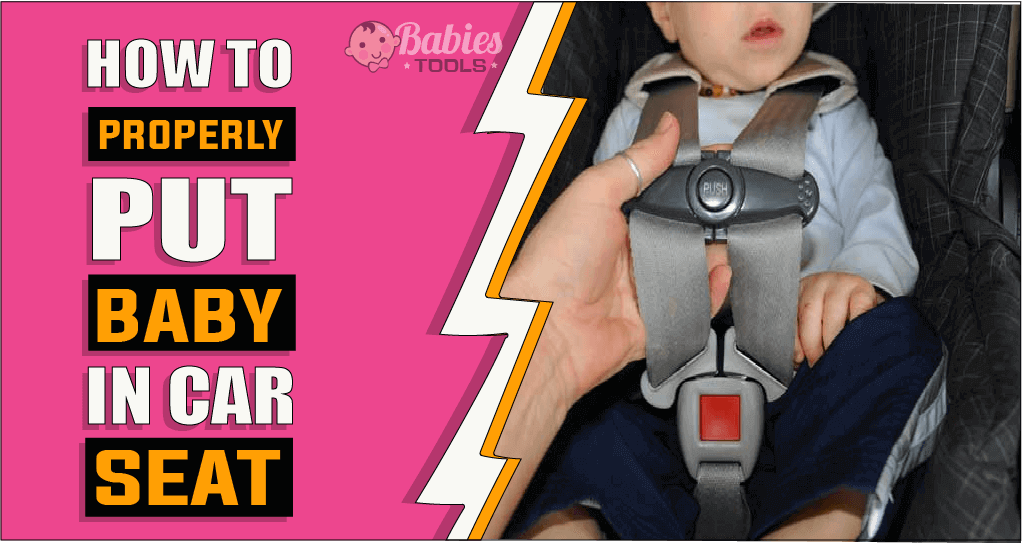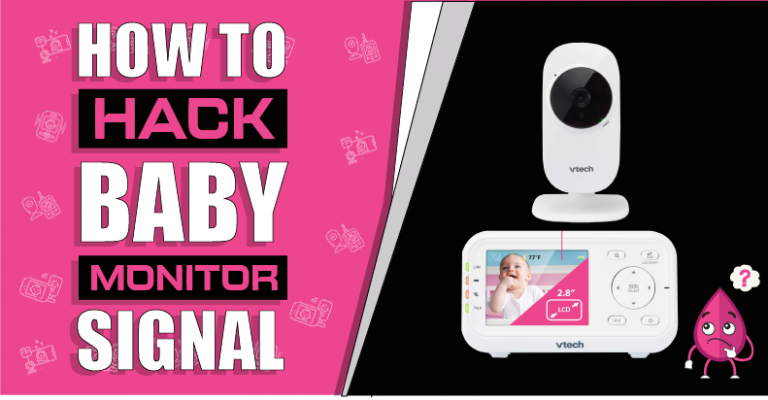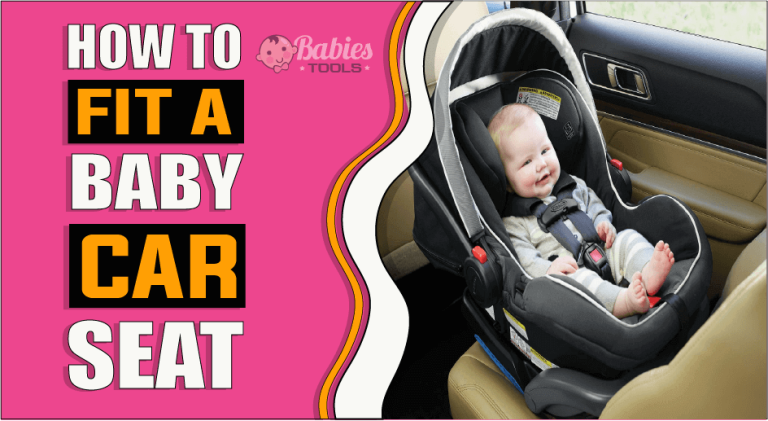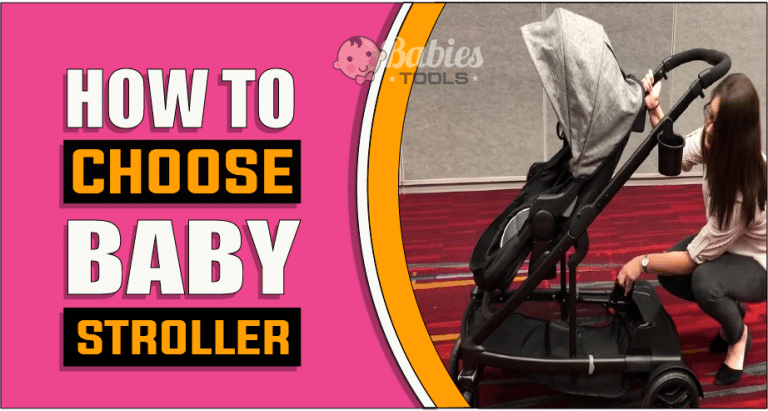How To Properly Put Baby In Car Seat – The Truth Reveals
As a parent, you already know how important it is to keep your baby safe. One of the best ways to ensure their continued safety and well-being is by adequately putting them into their car seat each time they ride in a vehicle. This task can initially seem daunting, but with the proper guidelines, it’s easy to master. Luckily, we’re here to help! In this blog post, we’ll walk you through correctly putting a baby in a car seat for maximum security on every trip. We’ll also cover tips for traveling with a baby and what are the most common mistakes when putting a baby in a car seat. So let’s get started!

Let’s explore how to put a baby in a car seat properly
Putting a baby in a car seat is essential to infant safety. It’s vital to ensure the car seat is properly installed and your baby is secured correctly before each drive. Here are some tips for putting your baby safely into their car seat every time.
1. Make sure you have the right type of car seat-
The first step in correctly putting your baby in a car seat is to ensure you’re using the correct type of seat. The American Academy of Pediatrics (AAP) recommends keeping babies rear-facing until at least age 2 or until they reach the highest weight or height their car seat’s manufacturer allows. Thoroughly read the car seat manual to determine your baby’s weight and height range.
2. Install the car seat in the backseat-
The safest place for a car seat is always in the backseat of your vehicle, away from the front airbags. Check your car’s owner’s manual or with your car dealer to find the best location for a rear-facing car seat, and follow the instructions for properly securing it.
3. Make sure the straps are not twisted-
Tightly secure your baby’s harness straps according to the directions provided with your car seat. Ensure they are not twisted and flat against your baby’s body. The harness straps should remain at or below your baby’s shoulders when rear-facing and above the shoulders when forward-facing.
4. Fasten the chest clip correctly-
The chest clip helps keep the straps in place and should always be positioned at the armpit level. The clip should be tight enough to keep the straps in place but not too tight that it causes discomfort. The chest clip should be fastened before buckling the car seat straps. If your car seat has a recline indicator, make sure the seat is correctly adjusted so that your baby’s head doesn’t flop forward.
5. Make sure your baby’s head is supported-
Your baby needs to be correctly positioned in the car seat so that their head is supported. Place a rolled-up receiving blanket or small towel behind your baby’s neck and shoulders to support the head if it falls forward while sleeping. Monitor your baby while driving to ensure they are positioned correctly in the car seat.
6. Check the fit-
After securely fastening your baby in the car seat, shake the seat from side to side and back to front. If it moves more than an inch in any direction, you’ll need to tighten the straps or adjust the seat’s recline angle. We also recommend taking your car and car seat to a certified technician for an annual check to ensure everything is installed correctly.
7. Put your baby in the car seat-
Finally, place your baby in the car seat and make sure the straps are snug around them. If you’re using an infant carrier, buckle it before putting your baby in it. Place them into the seat for older babies, and then tighten the straps. Ensure that their legs and arms are not trapped by the straps and can move freely.
By following these simple steps and ensuring that your child is correctly secured in a car seat, you can give them the best protection against potential dangers while on the road.
How to secure the baby in the car seat?
Securing a baby in a car seat is essential to keeping the infant safe while traveling in a vehicle. It is vital always to ensure that your infant is properly secured when transporting them by car. To ensure that your baby is secure, there are several steps you should take.
1: Read and understand the car seat instructions.
It is important to read and understand the specific instructions of your car seat before you attempt to secure your baby in it. Different models may have different procedures, so you know how yours works.
2: Place the car seat in the back seat.
Infants should always ride in the back seat of a car and never in the front, where an airbag could injure them if deployed. Make sure you place your car seat properly, according to its instructions, before you attempt to secure your baby.
3: Secure the harness straps around your baby.
When your baby is sitting in the car seat, properly secure their body with the five-point harness straps that come with it. Pull each strap firmly while checking to ensure they are not twisted or tangled.
4: Attach the top tether strap of the car seat.
Most car seats have a top tether strap that attaches to a hook in your car. This strap helps secure the car seat and keep it from moving around if you brake suddenly. Make sure the tether strap is securely fastened before continuing.
5: Check to make sure the belt path is clear of obstructions.
Before you buckle up your baby, ensure there are no objects or clothing items in the belt path that could prevent it from securely locking.
6: Install the car seat properly.
After completing all the other steps, you can finally attach your baby’s car seat to your vehicle using either a seatbelt or LATCH system (Lower Anchors and Tethers for Children). Read and follow the instructions for your car seat’s specific installation method.
Once you have completed these steps, your baby will be safely secured in their car seat. Make sure to double-check that everything is correctly in place before driving off with your infant. Following these steps can help ensure that your baby is safe and secure while you are traveling.
Tips for traveling with a baby and their car seat?
Traveling with a baby can be stressful and overwhelming, but preparing for the journey makes it much easier. Here are some tips to help make your trip as smooth and safe as possible when traveling with a baby in tow:
1: Familiarize yourself with the car seat:
Before your trip, ensure you are familiar with the car seat and how it works. Read the instructions carefully and practice installing them if necessary. Make sure all straps and buckles are securely fastened before each journey.
2. Use a travel system:
A travel system is a great way to ensure you have all the necessary items for traveling with a baby. It includes the car seat, base, and stroller in one package. It makes it much easier to move your little one from place to place without switching seats or carrying them around.
3. Pre-plan:
Whenever possible, plan ahead to ensure you have the right accommodations for your baby and their car seat. Research child-friendly places in your destination, book a hotel with cribs or other amenities and always ask if they offer car seats on loan.
4. Pack extra supplies:
Pack plenty of diapers, wipes, bottles, snacks, and extra clothing, so you don’t have to worry about running out on the road. Also, bring a cover or blanket for the car seat in case it gets too hot or cold during your trip.
5. Be prepared:
Finally, be ready for any situation that might arise during the journey. Ensure you have all your emergency contact information, medications and first aid supplies handy in an emergency.
Following these tips will help ensure your baby is safe and comfortable throughout the trip. With the right preparation and planning, you can make the most of your vacation with your little one!
What are the most common mistakes when putting a baby in a car seat?
When it comes to securing a baby in a car seat safely, there are several common mistakes that parents and caregivers commonly make.
1: Not following the manufacturer’s instructions-
It is essential to read and follow the installation and use instructions with any car seat. These manufacturers’ guidelines provide crucial information on how to properly install and secure the car seat, which may vary depending on the make or model of your vehicle.
2: Not making sure the harness straps are tight enough-
When securing a baby in the car seat, it is vital to ensure the straps are tight enough to keep them secure. A good rule of thumb is to ensure you can’t pinch the straps between your fingers or that the chest clip rises more than two finger widths from the shoulders.
3: Not making sure the car seat is installed securely-
When installing a car seat, it is important to ensure it has been secured properly in your vehicle. You should use the appropriate type of belt or latch system according to the instructions and ensure no visible signs of movement when giving it a tug at the base.
4: Not using the correct car seat for your child’s age and size-
Different types of car seats are designed for different ages and sizes of children. Selecting a car seat that meets all applicable safety standards and fits your child correctly based on their height, weight, and age is essential.
5: Not using products to help keep a baby cool-
In warmer climates, it can be essential to use sun shades, window sensors, and heat-reflective material to help keep a baby cool in the car. These products should be used according to the manufacturer’s instructions and regularly checked for any signs of wear or damage.
By avoiding these common mistakes when putting a baby in a car seat, parents and caregivers can ensure that they are safely secured while in the car. Safely securing a baby in a car seat is one of the most important things you can do to protect them during travel. Taking the time to read and understand the manufacturer’s instructions, ensuring the harness straps are tight enough, installing the car seat securely, and selecting the correct car seat for your child’s age and size can make all the difference in keeping your baby safe while on the road.
Relevant Questions:
The easiest way to put a baby in a car seat is to ensure that the harness straps are correctly adjusted and positioned, then place the baby into the seat and buckle them in. Ensure they are snugly secured by tugging on each strap before continuing your journey. Remember also to check your vehicle manual for specific instructions on securing your car seat correctly. It is essential always to follow the manufacturer’s instructions for your child’s safety.
It is essential to ensure your baby is securely fastened in the car seat whenever they travel with you. To ensure your baby’s safety and well-being, consult the manual with your car seat or check with a certified Child Passenger Safety Technician for instructions on proper installation. Additionally, check regularly to ensure your child’s harness straps are snug and the car seat is firmly secured to the vehicle.
Conclusion Paragraph
Ensuring your baby is safely secured in their car seat while traveling is essential. Properly strapping the harness around your child and providing the car seat is completely installed and secure should be a top priority. Other vital tips while traveling with a baby include keeping them entertained so they don’t become easily unruly and limiting snacks, so your child doesn’t feel uncomfortable. The most common mistakes when putting babies in car seats involve improper installation, incorrect strap adjustment, and incorrect overall positioning for the car seat within the vehicle. But now that you are armed with this helpful advice, you can have peace of mind knowing that you are taking all necessary steps to safely and properly put the baby in the car seat. From proper installation to preventing potential hazards for your young one, follow these guidelines for the ultimate road trip.






